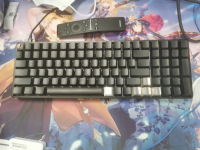Have you ever wondered how many bytes a boolean value takes in Java? One byte, this might be the answer comes out of your mind right away. But is it? Let's dig in more.
Per Oracle documentation on boolean value definition, there is below statement:
boolean: The boolean data type has only two possible values: true and false. Use this data type for simple flags that track true/false conditions. This data type represents one bit of information, but its "size" isn't something that's precisely defined.
From the description, it mentions that the size of the boolean value is not precisely defined. This indicates that there is some uncertainty about its size in different conditions. Let's check further. On Stackoverflow, someone did a testing to check the size of boolean in an array.
class LotsOfBooleans
{
boolean a0, a1, a2, a3, a4, a5, a6, a7, a8, a9, aa, ab, ac, ad, ae, af;
boolean b0, b1, b2, b3, b4, b5, b6, b7, b8, b9, ba, bb, bc, bd, be, bf;
boolean c0, c1, c2, c3, c4, c5, c6, c7, c8, c9, ca, cb, cc, cd, ce, cf;
boolean d0, d1, d2, d3, d4, d5, d6, d7, d8, d9, da, db, dc, dd, de, df;
boolean e0, e1, e2, e3, e4, e5, e6, e7, e8, e9, ea, eb, ec, ed, ee, ef;
}
class LotsOfInts
{
int a0, a1, a2, a3, a4, a5, a6, a7, a8, a9, aa, ab, ac, ad, ae, af;
int b0, b1, b2, b3, b4, b5, b6, b7, b8, b9, ba, bb, bc, bd, be, bf;
int c0, c1, c2, c3, c4, c5, c6, c7, c8, c9, ca, cb, cc, cd, ce, cf;
int d0, d1, d2, d3, d4, d5, d6, d7, d8, d9, da, db, dc, dd, de, df;
int e0, e1, e2, e3, e4, e5, e6, e7, e8, e9, ea, eb, ec, ed, ee, ef;
}
public class Test
{
private static final int SIZE = 1000000;
public static void main(String[] args) throws Exception
{
LotsOfBooleans[] first = new LotsOfBooleans[SIZE];
LotsOfInts[] second = new LotsOfInts[SIZE];
System.gc();
long startMem = getMemory();
for (int i=0; i < SIZE; i++)
{
first[i] = new LotsOfBooleans();
}
System.gc();
long endMem = getMemory();
System.out.println ("Size for LotsOfBooleans: " + (endMem-startMem));
System.out.println ("Average size: " + ((endMem-startMem) / ((double)SIZE)));
System.gc();
startMem = getMemory();
for (int i=0; i < SIZE; i++)
{
second[i] = new LotsOfInts();
}
System.gc();
endMem = getMemory();
System.out.println ("Size for LotsOfInts: " + (endMem-startMem));
System.out.println ("Average size: " + ((endMem-startMem) / ((double)SIZE)));
// Make sure nothing gets collected
long total = 0;
for (int i=0; i < SIZE; i++)
{
total += (first[i].a0 ? 1 : 0) + second[i].a0;
}
System.out.println(total);
}
private static long getMemory()
{
Runtime runtime = Runtime.getRuntime();
return runtime.totalMemory() - runtime.freeMemory();
}
}The output looks like
Size for LotsOfBooleans: 87978576
Average size: 87.978576
Size for LotsOfInts: 328000000
Average size: 328.0From the result, it looks like that int takes 4x size of boolean, since int is 4 bytes. Does this mean that boolean is one byte?
However, in Java Virtual Machine specification, it says that there is no dedicated bytecode instruction for boolean value, instead it will use int to replace it after compilation. As for boolean array, it can share the baload and bastore instructions with byte array.
This indicates that its size will be 4 bytes when a boolean value is compiled as a boolean variable, if it's an boolean array, the size of each boolean value in the array will be only one byte. But again this is up to the implementation of each Java Virtual Machine, some JVMs may not honor this guideline at all.

why not use jol to check the memory?